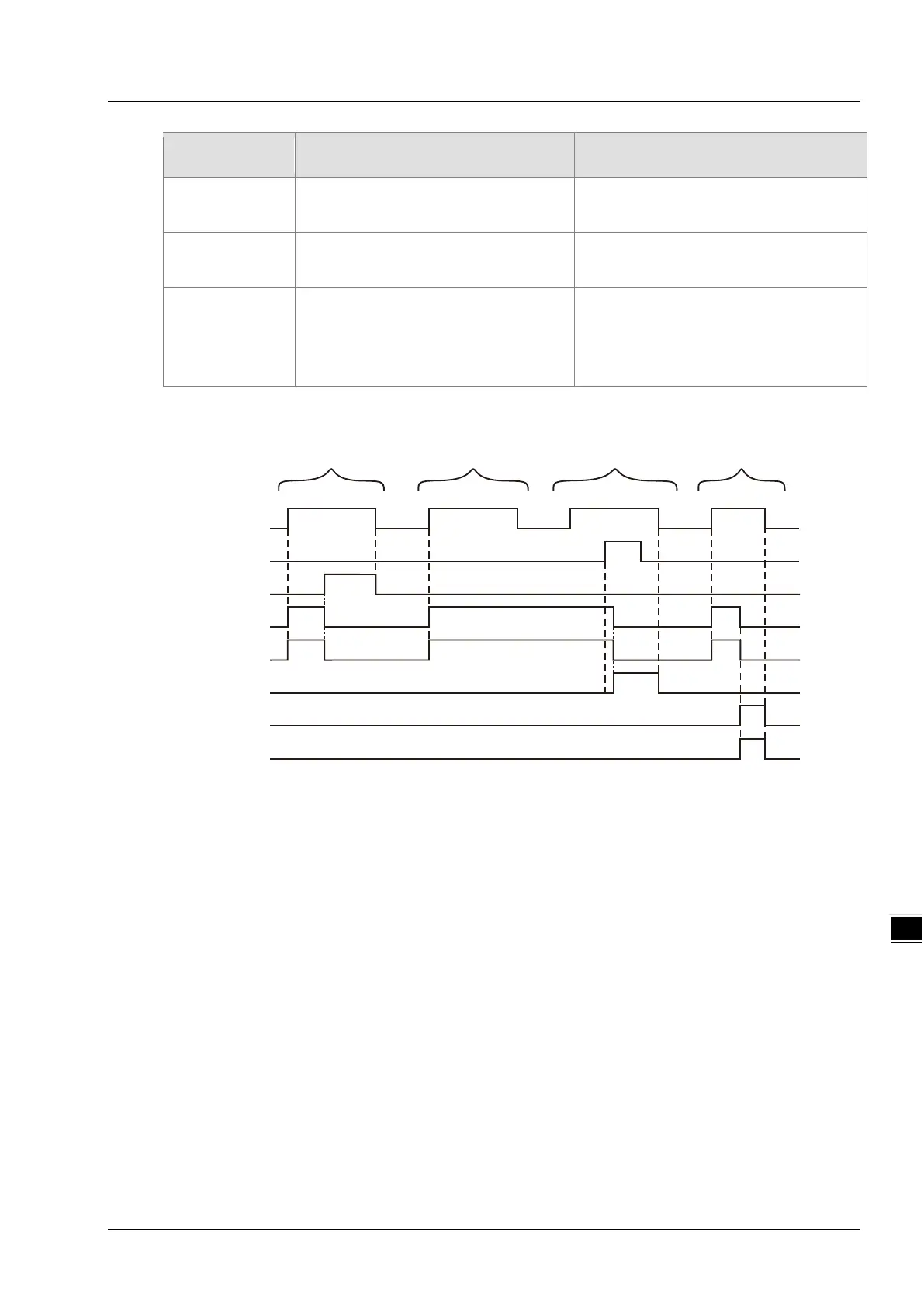Chapter 8 Logic Instructions
8-223
Timing for changing to TRUE Timing for changing to FALSE
When Error changes from FALSE to
Aborted
When the instruction execution is
aborted.
When Execute changes from TRUE
to FALSE.
Error
When an error occurs in the
instruction execution or the input
parameters for the instruction are
When Execute changes from TRUE
to FALSE.
Output Update Timing Chart
Execute
Abort
Busy
Active
Case1
Case2 Case3
Case4
Done
Aborted
Error
ErrorID
Case 1 If the instruction is used to receive one message or constantly receive multiple messages by
setting the value of DataSaveMode to 0, Busy and Active both change to TRUE when Execute
changes from FALSE to TRUE. Done changes to TRUE and both Busy and Active change to
FALSE when a piece of data receiving is finished or the total length of spliced data reaches or
exceeds the set length. Done changes to FALSE when Execute changes from TRUE to FALSE.
Case 2 If the value of DataSaveMode is set to 1, Busy and Active change to TRUE as Execute changes
from FALSE to TRUE. And the state of Busy and Active both keep unchanged and the instruction
keep receiving data as Execute changes from TRUE to FALSE.
Case 3 Execute is set from FALSE to TRUE again after case 2 and the output state of the instruction
keeps unchanged. Set Abort from FALSE to TRUE. One cycle later, Aborted changes from
FALSE to TRUE and meanwhile Busy and Active change to FALSE. When Abort changes from
TRUE to FALSE, the output of the instruction keeps unchanged. When Execute changes from
TRUE to FALSE, Aborted changes to FALSE.
Case 4 When Execute changes from FALSE to TRUE, Busy and Active change to TRUE. When an
error occurs, Error changes to TRUE, ErrorID shows corresponding error code and meanwhile
Busy and Active change to FALSE. When Execute changes from TRUE to FALSE, Error
changes to FALSE and the value of ErrorID changes to 0.

